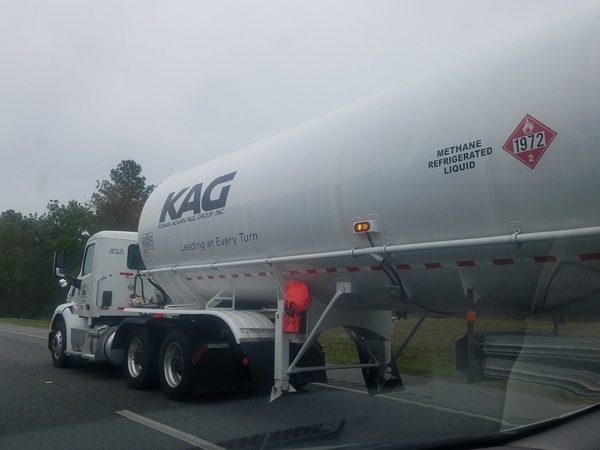Update 2022-10-04:
WWALS response to FERC on opposition comments of Pivotal LNG about small, inland LNG Rulemaking 2022-10-04.
Here’s how you can comment or intervene on the FERC Rulemaking on small inland LNG export facilities:
https://wwals.net/?p=59062#tocomment
It’s easy to comment or intervene, so you can do it by the deadline of September 20, 2022.
Public Citizen and Food and Water Watch have already intervened.
We guess they are preparing comments to convince the Federal Energy Regulatory Commission
to resume the responsibility it abdicated in 2015,
of environmental oversight of Liquid Natural Gas (LNG) export facilities
even when are not located where they can directly load LNG onto ocean-going tanker ships.
Instead, those inland facilities send highly compressed and explosive LNG in trucks and train cars down public highways past schools, business, churches, and homes,
through counties none of which have adequate emergency plans.
And where-ever that gas eventually gets burned, in Europe, Caribbean, or Asia,
it adds to the atmosphere more methane, a worse greenhouse gas than CO2,
cooking the planet and raising sea levels.
You are affected, even if you do not have an LNG export operation near you.
![[LNG tanker truck on I-75 turning onto I-10 for Jacksonville, LNG export map by WWALS]](https://www.wwals.net/pictures/2022-09-13--one-week-to-comment-FERC-LNG/many.jpg)
LNG tanker truck on I-75 turning onto I-10 for Jacksonville, LNG export map by WWALS
If you comment or intervene, we will invite you to join us and our co-signers
in the series of zoom meetings we’re having with the FERC Office of Public Participation (OPP).
You can help find out what OPP is actually doing.
At least they’re asking for Continue reading →

![[Deb Haaland at ONWR]](https://www.wwals.net/pictures/2022-09-16--okefenokee/many.jpg)
![[LNG tanker truck on I-75 turning onto I-10 for Jacksonville, LNG export map by WWALS]](https://www.wwals.net/pictures/2022-09-13--one-week-to-comment-FERC-LNG/many.jpg)
![[Request letter and expanded territory approved 2019-09-26]](https://www.wwals.net/pictures/2019-07-17--add-santa-fe-to-suwrk-territory/many.jpg)

![[Notice and map]](https://www.wwals.net/pictures/2022-07-22--ferc-lng-rulemaking-petition/notice.jpg)
![[What and by Whom]](https://www.wwals.net/pictures/2022-07-22--ferc-lng-rulemaking-petition/many.jpg)
![[Georgia, Florida]](https://www.wwals.net/pictures/2012-06-08--wwals-incorporation/many.jpg)
![[Sugar Creek, Withlacoochee River, trash, Valdosta Mayor and Council]](https://www.wwals.net/pictures/2022-05-07--pictures-cleanup-sugar-creek-withlacoochee-river/many.jpg)
![[Jennings Bridge, Alapaha River, c. 1989]](https://www.wwals.net/pictures/2022-01-05--jennings-bridge-sulak/n029695.jpg)
![[Jennings Bridge in WWALS ARWT map]](https://www.wwals.net/pictures/2022-01-05--jennings-bridge-sulak/map-arwt-jennings-bridge.jpg)
